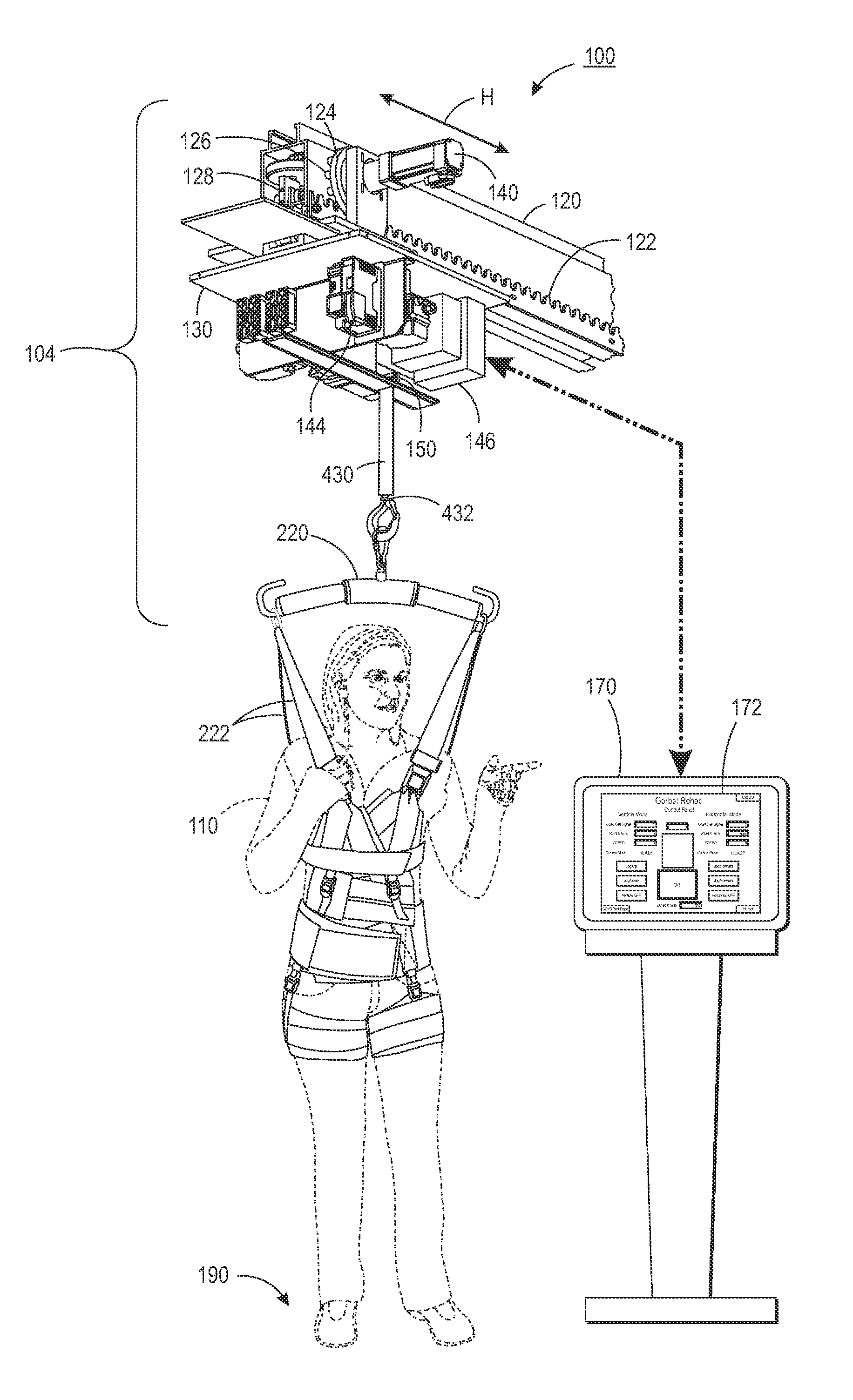Medical rehab lift system and method with horizontal and vertical force sensing and motion control
a lift system and vertical force technology, applied in the field of medical rehab lift system and method with horizontal and vertical force sensing and motion control, can solve the problems of poor endurance or walking pattern instability, challenge even the most skilled therapist, and inability to support themselves, so as to reduce the likelihood of falling or other injuries, improve the intensity or duration of training or therapy, and improve the endurance or walking pattern
- Summary
- Abstract
- Description
- Claims
- Application Information
AI Technical Summary
Benefits of technology
Problems solved by technology
Method used
Image
Examples
Embodiment Construction
[0033]Referring to FIG. 1, depicted therein is a system 100 for supporting the weight of a person or patient 110. In a general sense, the system comprises a track 120. Although the following disclosure is largely directed to a track-type system, for example a looped track path as illustrated in FIGS. 17-18 (e.g., no-beginning or end), various aspects and features of the disclosed system and associated methods are contemplated as being supported by an arm (e.g., Jib crane, Gorbel EasyArm™), a cantilevered track section, and perhaps even a gantry with the ability to programmatically define a path over which the gantry trolley can move. In such alternative embodiments, a movable support unit or truck 104 includes a movable support or base 130, where the support 130 may be fixed to another movable member or may itself be movable relative to a supporting structure. The movable support unit further includes other components such as a horizontal drive 140, actuator 400, etc. as will be fur...
PUM
 Login to View More
Login to View More Abstract
Description
Claims
Application Information
 Login to View More
Login to View More - R&D
- Intellectual Property
- Life Sciences
- Materials
- Tech Scout
- Unparalleled Data Quality
- Higher Quality Content
- 60% Fewer Hallucinations
Browse by: Latest US Patents, China's latest patents, Technical Efficacy Thesaurus, Application Domain, Technology Topic, Popular Technical Reports.
© 2025 PatSnap. All rights reserved.Legal|Privacy policy|Modern Slavery Act Transparency Statement|Sitemap|About US| Contact US: help@patsnap.com



